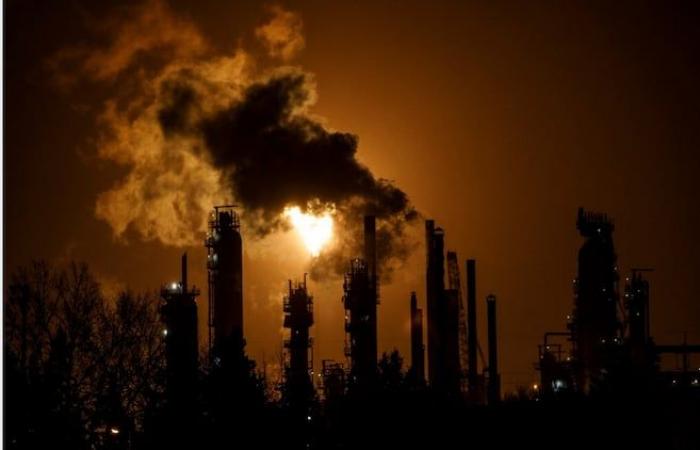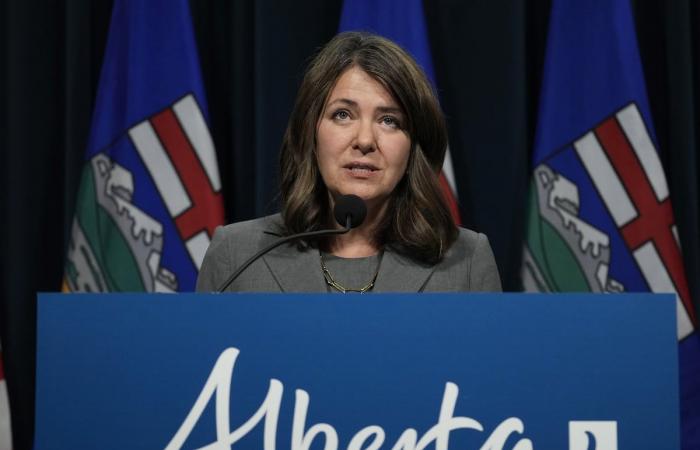The regulations, which are still in draft form and about two years behind schedule, could further affect relations between Ottawa and the Alberta government, which recently launched an advertising campaign of $7 million to “remove the cap”.
For the Liberals, the regulations fulfill a 2021 election promise aimed at forcing the energy sector to do its part in the fight against climate change.
In an interview with The Canadian Press, Mr. Guilbeault said that everyone had to “do their fair share.”
The minister is due to hold a press conference on Monday afternoon with his Natural Resources colleague, Jonathan Wilkinson, to unveil details of the plan.
Mr. Guilbeault noted that the oil and gas industry is a major source of emissions, but has done less than most other sectors to reduce them in the fight against climate change.
“I think most Canadians – even those who are not my biggest fans – would agree that it is not acceptable for any sector not to do its part, and that is primarily the objective of this regulation “, he explained.
Upstream oil and gas operations, including production and refining, contributed approximately 31% of Canada's total emissions in 2022.
The regulation proposes to force emissions from upstream oil and gas operations to decrease by 35% compared to 2019, between 2030 and 2032.
Emissions from the sector have already fallen by 7% between 2019 and 2022 – the most recent year for which statistics are available – with similar production levels.
Production unchanged, according to Ottawa
Mr. Guilbeault is aware that there will be negative reactions, but he says he is determined to achieve the Liberals' climate objectives. The government is also adamant that the regulation can be implemented with existing technology, without reducing production.
According to Mr. Guilbeault, federal models show that, even with regulations, oil and gas production will still increase by 16% by 2032, compared to 2019.
Minister of Environment and Climate Change, Steven Guilbeault, speaks during a press conference, Wednesday, October 2, 2024, in Ottawa. (Adrian Wyld/The Canadian Press)
The minister argues that reducing emissions from the Canadian oil sector is the only way for Canadian oil to remain competitive in a world that is increasingly seeking the greenest option available.
“In a world where carbon emissions are limited, people who continue to demand oil will demand low-emission oil,” he said. And if our businesses and our oil and gas sector don't make the investments necessary to do that, they won't be able to compete in this world.”
The cap does not dictate what companies must do to meet the target, but Guilbeault noted that modeling suggests about half of the reductions will come from reducing methane emissions. These reductions are already happening as oil producers install equipment to prevent methane leaks that were a major source of emissions.
The rest will be split between various technologies, including carbon capture and storage. Ottawa is expected to spend about $12.5 billion in tax credits to encourage and help businesses invest in these systems that trap carbon dioxide and return it to underground storage.
The broad outlines of the policy were outlined nearly a year ago when Mr. Guilbeault released a “framework” for the plan, which promised to force emissions from upstream oil and gas production to fall to that they are between 35 and 38% lower in 2030 than in 2019.
The draft regulations, which will be open for public comment until January 2025, ultimately chose the lower end of that range. Minister Guilbeault affirms that this decision was taken after long discussions on what it was possible to regulate without forcing a reduction in production.
Impacts expected in Alberta
Production is expected to be at the heart of the debate when the regulations are published on Monday. Several economic studies based on the December 2023 framework plan have indicated that the only way to achieve the targets is to reduce production.
The Conference Board of Canada said in March that overall oil and gas production would increase by about 14% without an emissions cap and by 1.6% with an emissions cap. The organization predicted that government revenues, particularly in Alberta, would be much lower as a result.
He also predicted job growth would be slower, with a greater impact in Alberta.
Goldy Hyder, president of the Business Council of Canada, argued in a statement before the emissions regulations came into effect that imposing a cap was the wrong decision for the country.
He said the cap would harm the economy, restrict cross-border energy trade with the United States and make climate policy “even more incoherent and uncompetitive.”
Alberta Premier Danielle Smith has vowed to fight emissions caps, saying it would deal a “devastating blow” to her province's economy and jobs. (Todd Korol/Canadian Press Archives)
Last weekend, members of Smith's ruling United Conservative Party voted overwhelmingly in favor of a resolution to abandon the province's plans to reduce emissions and declare carbon dioxide an essential and not as a pollutant.
Conservative Leader Pierre Poilievre also promised to remove regulations on emissions caps.
A “victory” for Guilbeault
The regulations won't be finalized for months, and it's possible the next federal election will take place before they actually come into effect.
For Steven Guilbeault, implementing this regulation in a fight against climate change that he says has become so politically charged that even progressives are wavering seems like something to celebrate.
“In this day and age, where climate change is caught up in this culture war that we see in many parts of the world, being able to continue to advance progressive policies to combat climate change is in itself a great victory,” he said. -he advanced.







